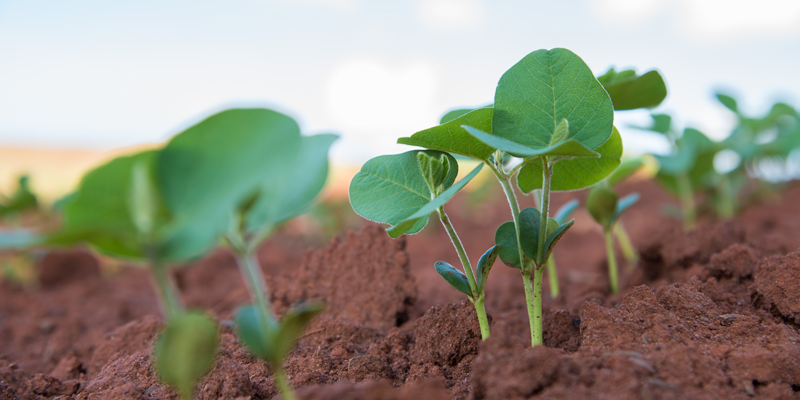Kathryn Bushley and Thomas Kim look toward fungi as potential answer for destructive nematodes.

Summer in Minnesota: a time for boating on the lakes, spending time outdoors, enjoying the extra daylight and a key time for growing crops. For many soybean farmers, however, a certain parasitic roundworm can potentially wreak havoc on their harvest.
“Soybean-cyst nematodes are a big problem,” says Plant and Microbial Biology faculty member Kathryn Bushley. “I’d say that they’re the major pathogen of concern for soybeans in Minnesota.”
Bushley, along with Thomas Kim, an undergraduate in her lab, and several graduate students are looking toward naturally-occurring fungi as a potential answer to deal with these destructive critters. Bushley’s lab pulled samples of hundreds of these fungi from an experimental station in Waseca. The team then ran screenings and petri dish tests to see if any of the fungi would have genotypes or traits that would deter the nematodes from surviving or effectively laying eggs. Their next step is to apply these fungi to soybeans grown in a greenhouse with native soils from Waseca and Crookston, Minnesota over the summer.
“The idea is that some of these fungi might make a more-specific toxin or only target the soybean-cyst nematode,” says Bushley. “There are huge numbers of nematodes in soils. There are whole communities in there and we are only beginning to understand what they’re doing. Since some are likely beneficial, we also probably don’t want to kill all of them.”
Dealing with the soybean-cyst nematode is a long-standing issue for farmers in Minnesota. Previously, farmers would have had to use potentially toxic fumigants as an agent to deter the pests, most of which are now banned due to environmental and health concerns. And while crop rotations and resistant varieties can help to deal with these nematodes, there is also evidence the nematodes are evolving to break down that resistance.
“From literature, it seems like microbial communities in these soils may counteract this invading nematode,” says Kim. “We have some candidates from our fungi samples that we’ll test.”
For Bushley and Kim, however, this summer project is merely one step in understanding a much larger process in finding a solution that can be put into practice.
“If you apply a fungus, can it actually survive in the soil? That’s kind of an important question,” says Bushley. “When we test it in a petri dish, it may do its thing and it’s clean and easy. But when we put it into a natural soil, does it survive and successfully control the nematode? That’s what we’re looking to find out.”
-Lance Janssen